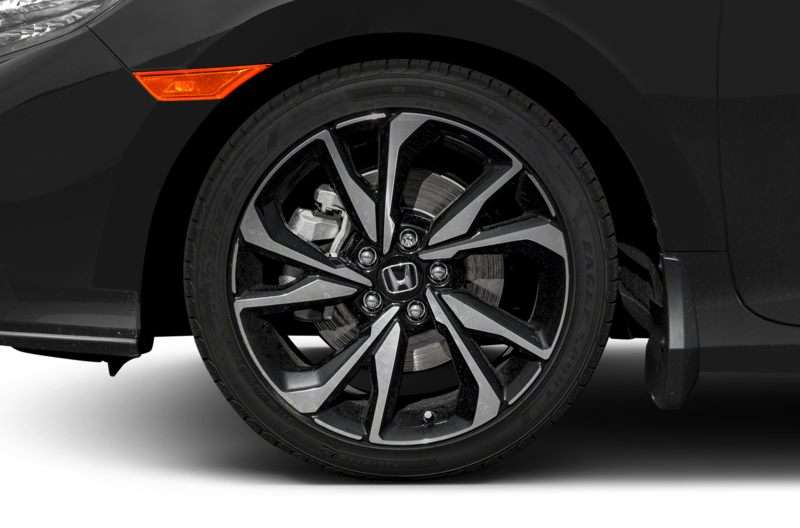Recent Articles
Popular Makes
Body Types
2017 Honda Civic Si Review
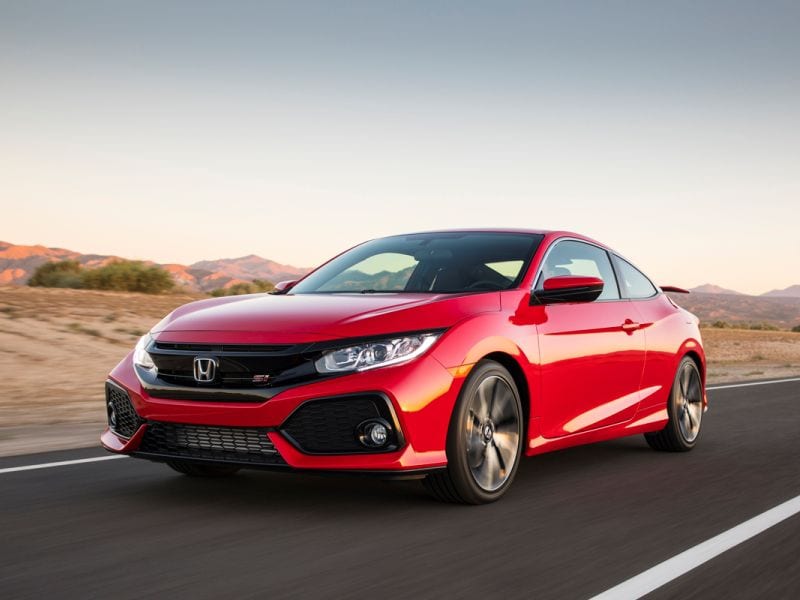
2017 Honda Civic Si front Rallye Red ・ Photo by Honda
There’s one telling detail about the 2017 Honda Civic Si that enthusiasts will appreciate: The mounting bracket of the six-speed manual transmission has been strengthened, because Honda expects drivers to be making more frequent and more forceful gear changes. This, in turn, speaks to how the car will be driven overall, and by whom.
Here’s another nugget of crucial information: The front seats have their own design and construction — different from the standard Civic range — to hold their occupants more steadily, in anticipation of higher-than-average cornering speeds.
Peppy and Balanced
This is not the absolute sportiest version of Honda’s excellent compact car (that would be the newly minted Type R), but it’s still pretty peppy, and that talent is balanced out with a ride quality that’s poised without being pounding. This is the eighth generation of Si and the 10th generation of Civic, so there’s some heritage and quite a bit of cachet attached to the badge, particularly among “sport compact” fans. Honda has taken things even further by adding a turbocharger for the first time.
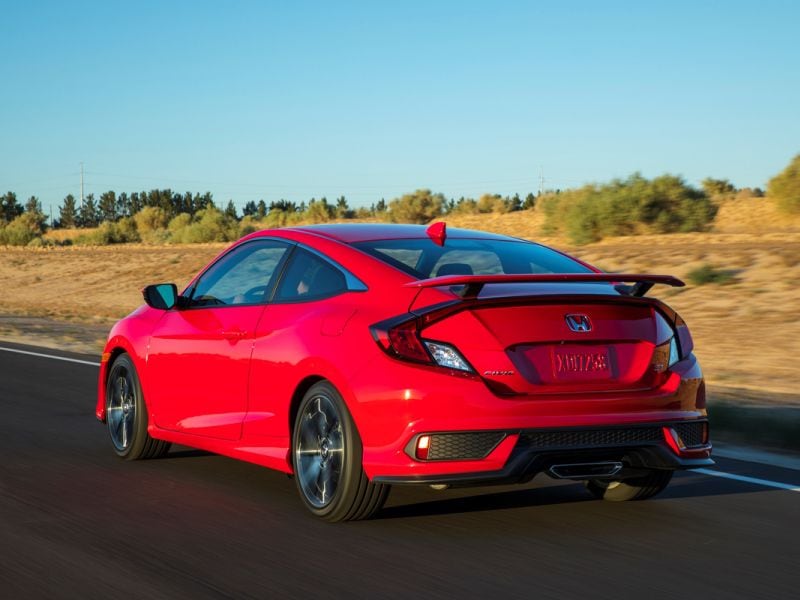
All Aboard the Drivetrain
That turbo is bolted to a 1.5-liter four-cylinder engine and helps generate 205 hp and 192 lb-ft of torque. Only the front wheels receive that drive and the sole transmission is the aforementioned six-speed manual. Anyone interested in an Si probably doesn’t have the daily commute or trips to the grocery store uppermost in their minds. They’re looking for involvement, a committed driving relationship.
Thinking long-term, then, consumption amounts to 28 mpg in the city, 38 mpg on the highway and 32 mpg combined, on premium fuel.
Coming back to the transmission for a moment, many Americans may not be aware that Honda has a great reputation for producing manual gearboxes that are an absolute pleasure to use. The shift actions are quick, short and precise. That’s undoubtedly the case here. It’s a crucial ingredient in the overall recipe.
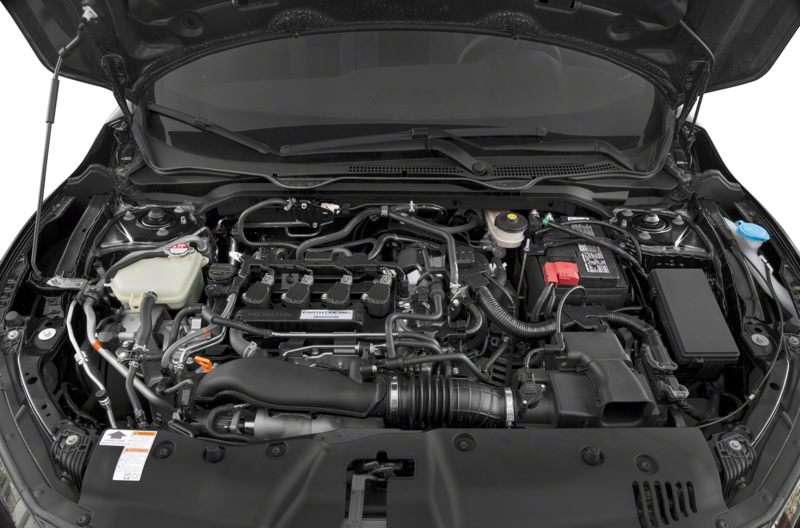
Staying on Track
This amount of engine output, though, is really the minimum the Si can get away with before people will start looking elsewhere. The thing is, the chassis can deal with forces greater than this motor can produce, even when there’s a turbo in the mix. And the torque figure — an indication how easily the car can get moving, and usually a beneficiary of forced induction — is even less impressive once it’s applied in the real world.
All it takes is to come out of a tight canyon road corner only to meet an upward stretch. It’s not that there’s any glaring lag between flooring the aluminum throttle pedal and waiting for the turbo to kick in. It’s just that when everything does get with the program, there’s insufficient urge. And with only six ratios to choose from, third gear might sometimes be too low and fourth could be too high. If there was the option of, say, a dual-clutch automated manual with another cog or two, it might be able to keep the engine spinning at its sweetest spot. But the more obvious answer would be to boost the torque.
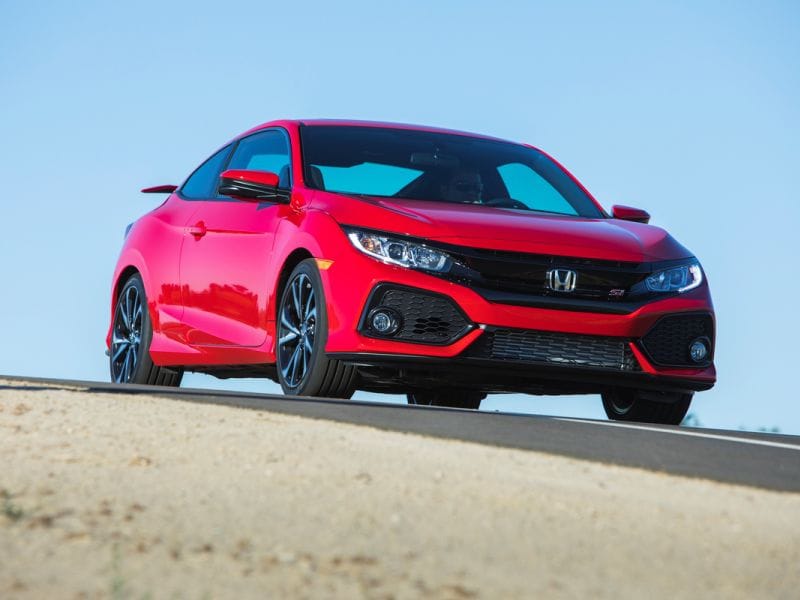
Suspension
However, the suspension remains in a much-deserved glowing light. Honda started with a Civic body that is stiffer than its predecessor by around 25 percent, which provided a firmer foundation to fine-tune things like damping behavior. So the Si is controlled yet pretty comfortable for a sporty car, with predictable and progressive responses once the tires start to reach their limits of grip. As front-engined front-wheel-drive cars go, the Civic Si is tidy and agile, with only the inevitable result of the nose breaking away mildly when pushed too hard. And even that understeer is kept in check by a standard-issue helical limited-slip differential.

Bells and Whistles
Other standard equipment includes drive mode selection — switching between Normal and Sport, affecting steering weight and throttle response — 18-inch alloy wheels, heated front seats, a rearview camera, adaptive dampers, sport exhaust, satellite/HD radio, and a digital instrument cluster that can display lap times and g-forces. That’s pretty good for a starting price of $24,775.
If anyone wanted to spend more, the only real option is a set of high-performance tires costing $200. That’s another indication of the Si’s expected audience. And the only interior color scene is black, highlighted by red stitching.
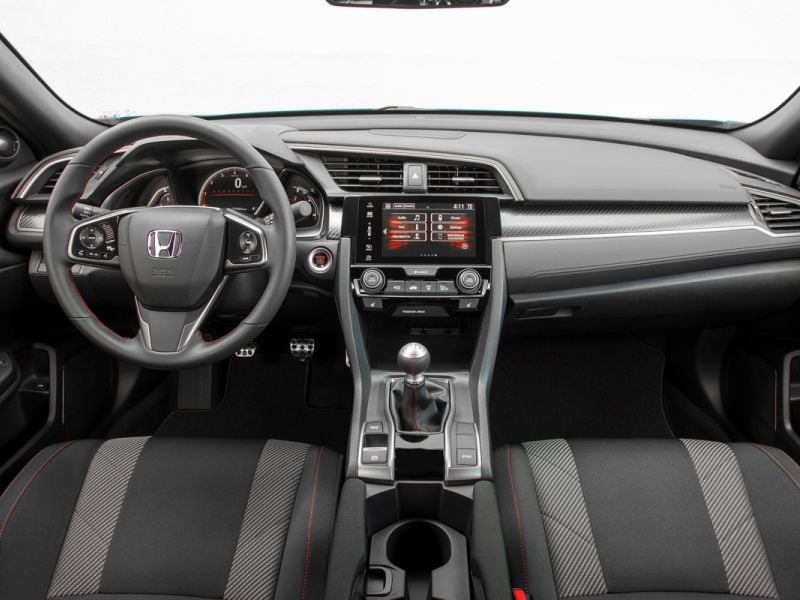
Photo by Honda
Rolling Stock
For the money and considering that driving fun is the main, um, thrust behind the Si’s appeal, most potential buyers won’t bother too much about the plastics in the cabin — which ranks just above “cheap” on the quality scale. And the small amount of road noise can also be forgiven. It’s more important to find a suitable driving position (easily done). The Si comes in sedan and coupe body styles, and both enjoy a fair bit of space for a compact car. The coupe has a larger rear wing, by the way.
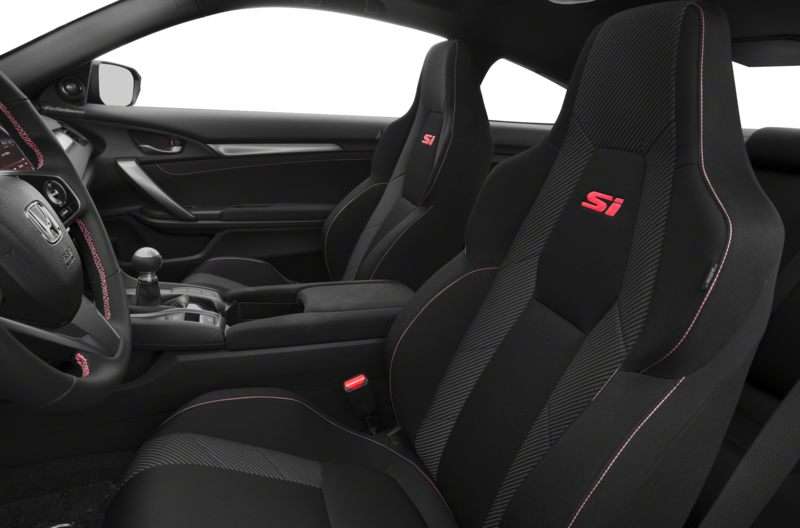
Just the Ticket?
Honda knows this is a specialist car and has done a fine job of updating the Si pedigree. The company also has a reputation for virtually bulletproof reliability. There is, however, a strong competitor in the 2017 Volkswagen Golf GTI. It comes with a noticeably more muscular engine and offers the option of a dual-clutch automated transmission, the versatility only a hatchback can provide, a refined ride quality, serene cabin, quality materials and its own much-admired heritage. The downside is that it’s more expensive, to the tune of $2,000 or so. That could buy a lot of high-performance tires.
